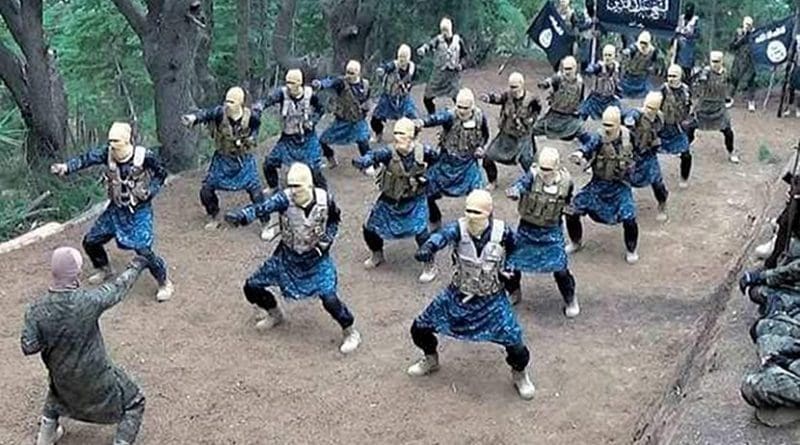ISIS Attack On Kabul Gurdwara: Why India Should Be Concerned – Analysis
By Observer Research Foundation
By Kabir Taneja
The attack at a gurdwara in Kabul, targeting Afghanistan’s minority Sikh community that left at least 25 people dead, was not the first time the community was targeted in the country. The terror strike was later claimed by ISIS’s Afghan affiliate, the Islamic State Khorasan (IS-K).
One of the attackers was identified as an Indian, a 29-year-old man called Mohsin, hailing from Kasaragod in Kerala. ISIS’s weekly newsletter, Al Naba, showcased Mohsin’s photograph, although it remains uncertain whether it was taken before the attack or is older than that.
His case has been one of the biggest challenges for India when it comes to pro-ISIS sympathisers, that there is lack of data on how many joined ISIS from India’s large migrant populations living in and around the Gulf region. Mohsin justified his attack as a reaction to the atrocities committed against Muslims in Kashmir.
ISIS Operations in Afghanistan Aren’t One-Dimensional As In Syria & Iraq
Nonetheless, the attack against the Sikh community in Afghanistan is not surprising, and nor is it new. Within Islamist ideologies, non-Muslims are seen as non-believers, and their ecosystems and societies are targets.
These include certain sections of the Taliban, former fighters of the Tehrik-e-Taliban Pakistan (TTP), jihadists from Central Asia such as the Islamic Movement of Uzbekistan (IMU), actors from Uyghur militants from China’s restive Xinjiang province, and the disgruntled Miran Shah Shura which comprises of the notorious Haqqani Network – a group which allows puppet masters from Pakistan’s ISI intelligence agency to give them freelance work against India for money, power, weapons – and more often than not, to gain an upper-hand in the intra-Shura politics of the Taliban (important to note that all of the Taliban’s Shuras, or consultative councils, are based in Pakistan), and so on.
Within the Afghan landscape, researchers Amira Jadoon and Andrew Mines have highlighted that 38 percent of IS-K leaders in Afghanistan and Pakistan also had affiliations with other groups.
‘Birth’ of the First Emirs of Islamic State Khorasan
In fact, it is documented in the works of researchers such as Antonio Giustozzi, that in 2010, when relations between al Qaeda and parts of the Taliban were in duress, the likes of the Haqqani Network stepped up to help al Qaeda recruit for the Syrian theatre in Afghanistan, in exchange for significant donations coming from Osama Bin Laden’s coffers. The commanders and jihadists, rounded up by the Haqqanis to go to the Syrian theatre, were paid a hefty amount, up to USD 800 – 1,000 per month.
At that time, ISIS offered ‘brand value’ like no other, and as returning jihadists installing their claim in the busy Afghan jihad scene, wearing the ISIS brand on your sleeve not only announced one’s arrival within the complexities of the country’s warring tribal landscape, but globally as well.
Kabul Gurdwara Attack Against Backdrop of CAA & NE Delhi Violence
The attack on the gurdwara in Kabul also comes at an interesting time, when protests in India over the Citizenship Amendment Act (CAA) and the communal riots in Delhi have arguably put a spotlight on India for transnational jihadist groups.
A new self-proclaimed pro-ISIS online media outlet, called Al Qitaal Media Center by Junudul Khilafah al-Hind, launched its new online magazine,Voice of Hind’s, first issue on 24 February, with the cover page asking Indian Muslims ‘So where are you going? A Call to Muslims of India’ – asking Indian Muslims in the aftermath of the Delhi riots to join the cause of Islam as per ISIS’s ideologies and sharia laws.
The magazine also included pictures of Indian leaders – from Prime Minister Narendra Modi to leaders from the opposite isles such as Asaduddin Owaisi and Kanhaiya Kumar, criticising all of them universally along the idea of democratic politics, while suggesting that Indian Muslims will only find a safe haven in an Islamic political system, and not what they accept today under a democracy.
Should India Be Concerned?
Even al Qaeda in the Indian Subcontinent (AQIS) run an Urdu language magazine Nawa-e-Afghan Jihad, whichrecently changed its name to Nawa-e-Ghazwa-e-Hind, suggesting a shift to the issue of Kashmir as the Taliban, and by association, al Qaeda, see the impending US withdrawal from Afghanistan as a victory.
Despite putting its weight behind the country’s democratic process and the re-elected President Ashraf Ghani, and Vice-President and former Afghan Intelligence Chief Amrullah Saleh, there is an increase in targets against Indian interests, more often than not done with the blessings of Pakistan – which will see a drastic increase in influence as the US leaves – threatens to become the new normal.
This article originally appeared in The Quint.

